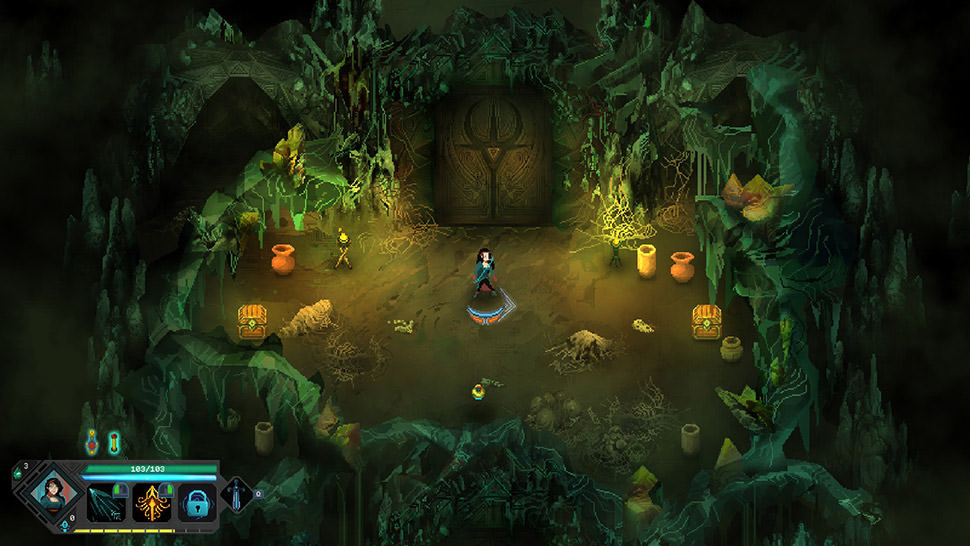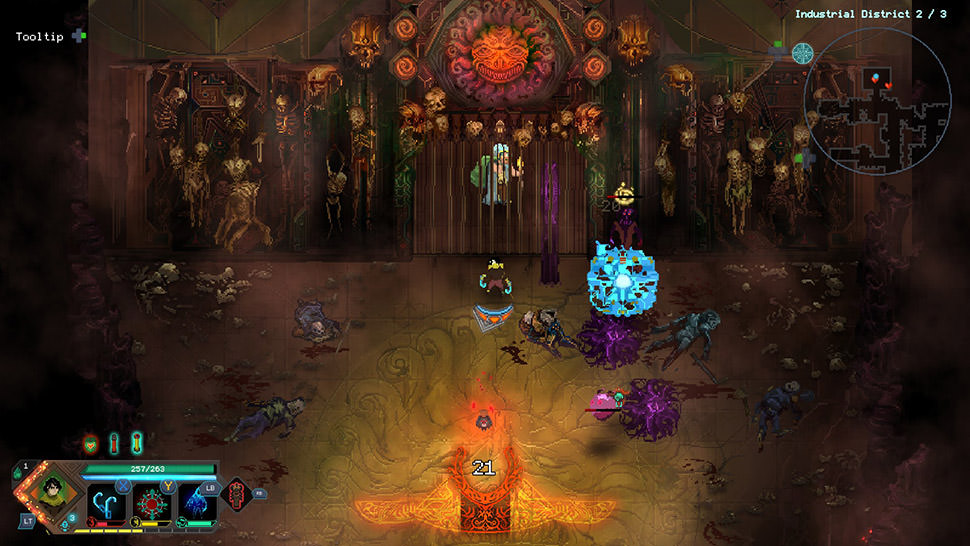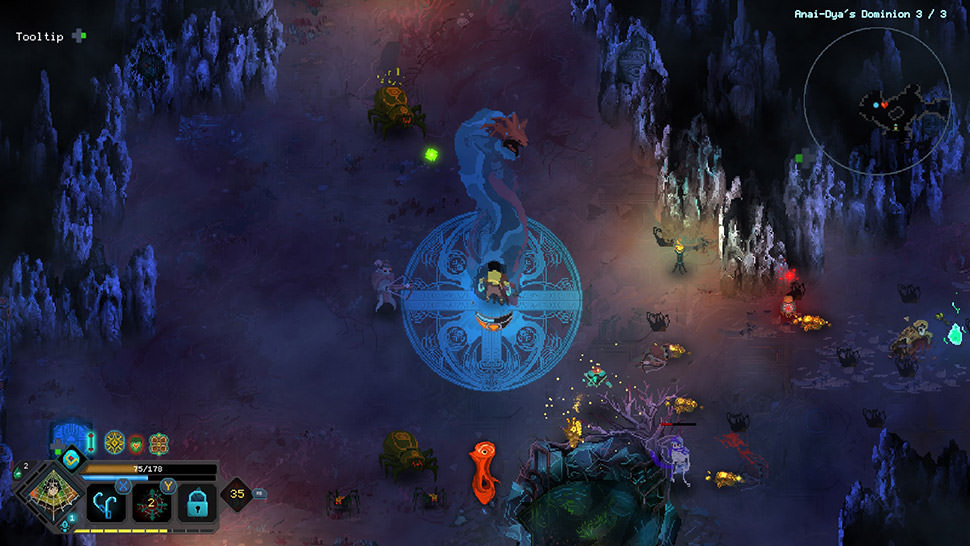Children of Morta Review

 By Marcus Jones | Oct 15, 2019
By Marcus Jones | Oct 15, 2019
Originally a Kickstarter title, Children of Morta is finally making its way to consoles, after releasing on PC last month. Set in a beautifully, stylized 8-bit world, you play as the Bergson Clan. Charged with defending the lands, a god's decision to corrupt the very world around his mountain thrusts the family directly into the path of resistance against a god's will. As the corruption spreads and the family is pit against a seemingly impossible set of odds and the will of a god, you'll see how their story unfolds as they all work to protect themselves and those around them.

This heavily story-driven narrative is filled with frantic combat, exploration, and a procedurally generated series of dungeons that will keep you guessing every time you venture out into the vast world. This hack and slash role-playing game is reminiscent of the old 8-bit games you could sit next to a friend and play all day. It even comes with a local cooperative mode for two-player efforts.
Overall, the gameplay is very simplistic. The left thumbstick is for movement, and while attacks can be controlled with the right thumbstick, the button square button can be used as well. It's more dependent upon your character at the time and if you want a twin-stick style experience or a more direct action title. Cross provides you with a dodge (which has a cooldown), and r1 and triangle will activate either your character's attacks or any equipped items. L1 changes based upon your character - John, for example, uses a shield to block incoming attacks. This takes up stamina, which upon depleted, will cause you to lose your block. Since every character is different in their attacks, their abilities, and "how they handle," it may take a few tries to find that specific character that suits your needs.

The variety of characters is what gives Children of Morta most of its replayability in my eyes. Sure, levels change each playthrough, but it's the characters themselves, their different combat mechanics, and the fact that leveling the family as a whole nets you better bonuses. There's a definite distinction between character classes as well - tanks, ranged, and close-range rogues. John, your first character, is a tank and capable of both dealing and taking some decent damage before falling, but he's got his flaws. Getting mobbed makes it easier for the tank-types to die as attacks are directional. This similarly applies to the rogue as it uses a close-range attack. The ranged characters, with the ability to both move and shoot, make it easier to stay at a safe distance even if you do sacrifice some of your health.
The game's character progression is neat: spending skill points unlocks the next tier of skills, as well as a family skill that boosts everyone simultaneously. Since dying doesn't truly mean the end in this game, it's not a bad thing to croak halfway through a level since you'll carry your experience over. Some of the attacks provide area attacks with excellent damage, while others will boost stats permanently. Once again, it's all based upon which character you're using at that time. In addition to the character progression, you can earn morv (essentially gold), which in turn can be used to upgrade the Bergson's over time through either armor/weapon upgrades or research into the history surrounding the corruption.

Children of Morta is tough. Classically difficult, even. But it's tough in a way that makes the game fun - dying doesn't send you back to the "new game" menu. It's part of the process, and any morv you collect is saved each time. Since each level is procedurally generated as well, no attempt will be the same as your previous ones. The only thing that might repeat is your self-loathing at being killed by a goblin again and again. Levels are split into floors, with a boss at the end. Minibosses will occasionally appear as well, but as you make your way through the dungeons, it's the big baddies that will really be your target. Expect them to take a few tries potentially, especially if you're not adequately leveled enough or your loadout isn't a good combo. The first boss took me three tries, and I only happened to win by a lucky loadout. It both decreased my overall health for a significant damage boost with another token that boosted my health dramatically, and I still almost died. This element of luck in the game can thoroughly ruin your level at times, but it never really ruins the experience.
Simply Put
Children of Morta reminds me of titles like Secret of Mana crossed with recent procedural titles, such as Enter the Gungeon. The inclusion of local cooperative play opens up the experience for two-players to battle together. Tack on a fun story where you learn about each family member's past, their fears, and the driver for them to help, adding a flair to the game. While combat can be a bit of a pain and dying repeatedly is still never a good time, the game still offers a substantial experience.
Note: Children of Morta was reviewed on PlayStation 4. A digital copy of the game was provided by the publisher/developer.




